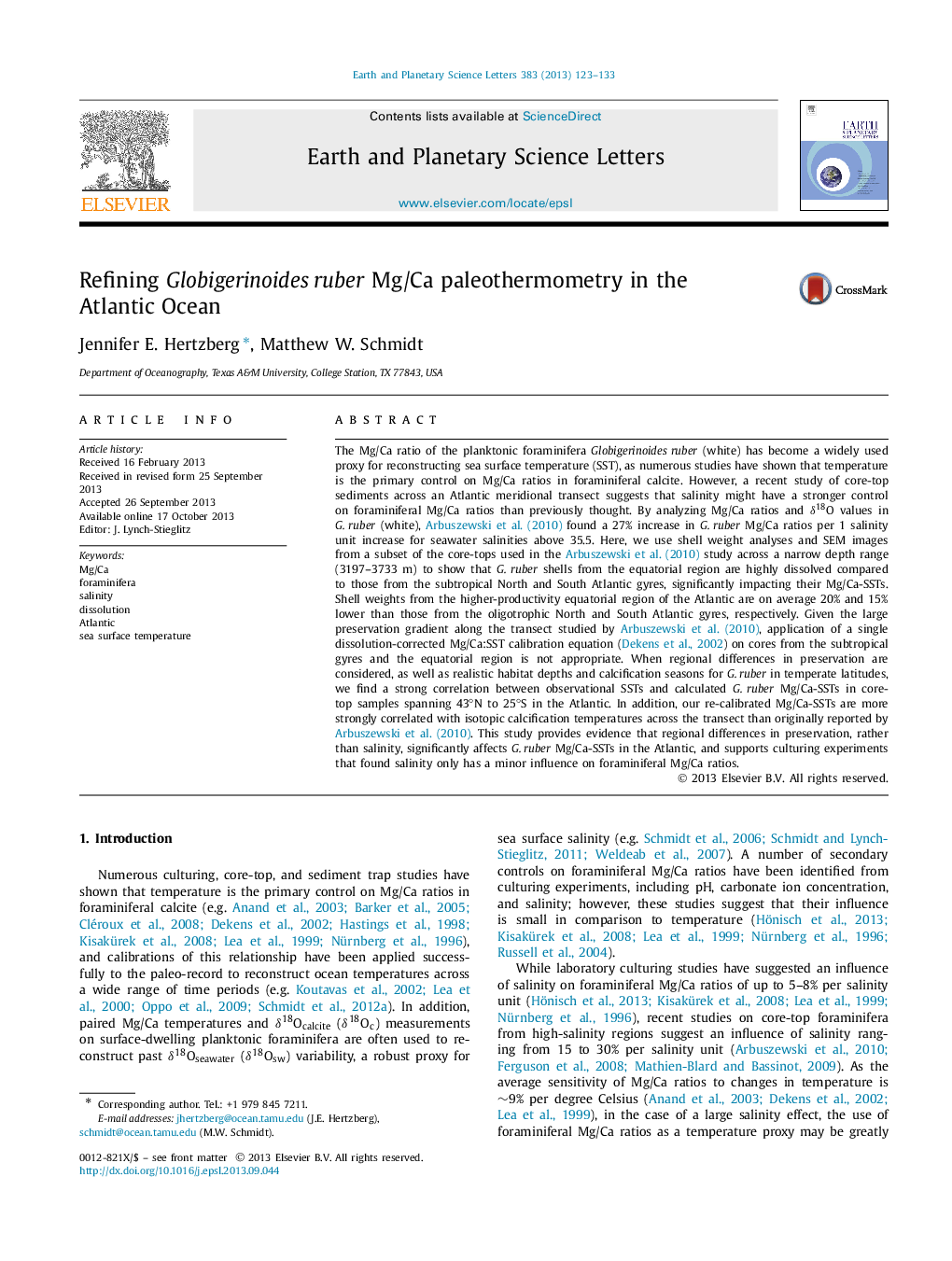| کد مقاله | کد نشریه | سال انتشار | مقاله انگلیسی | نسخه تمام متن |
|---|---|---|---|---|
| 6429852 | 1634773 | 2013 | 11 صفحه PDF | دانلود رایگان |

- Re-evaluation of proposed salinity effect on Atlantic G. ruber Mg/Ca ratios.
- Shell weights and SEM images show little dissolution of G. ruber in subtropics.
- Evidence for significant G. ruber dissolution above lysocline in tropical Atlantic.
- Cannot use single dissolution-corrected calibration equation across entire basin.
- No salinity effect on G. ruber Mg/Ca ratios when proper calibration equations used.
The Mg/Ca ratio of the planktonic foraminifera Globigerinoides ruber (white) has become a widely used proxy for reconstructing sea surface temperature (SST), as numerous studies have shown that temperature is the primary control on Mg/Ca ratios in foraminiferal calcite. However, a recent study of core-top sediments across an Atlantic meridional transect suggests that salinity might have a stronger control on foraminiferal Mg/Ca ratios than previously thought. By analyzing Mg/Ca ratios and δO18 values in G. ruber (white), Arbuszewski et al. (2010) found a 27% increase in G. ruber Mg/Ca ratios per 1 salinity unit increase for seawater salinities above 35.5. Here, we use shell weight analyses and SEM images from a subset of the core-tops used in the Arbuszewski et al. (2010) study across a narrow depth range (3197-3733 m) to show that G. ruber shells from the equatorial region are highly dissolved compared to those from the subtropical North and South Atlantic gyres, significantly impacting their Mg/Ca-SSTs. Shell weights from the higher-productivity equatorial region of the Atlantic are on average 20% and 15% lower than those from the oligotrophic North and South Atlantic gyres, respectively. Given the large preservation gradient along the transect studied by Arbuszewski et al. (2010), application of a single dissolution-corrected Mg/Ca:SST calibration equation (Dekens et al., 2002) on cores from the subtropical gyres and the equatorial region is not appropriate. When regional differences in preservation are considered, as well as realistic habitat depths and calcification seasons for G. ruber in temperate latitudes, we find a strong correlation between observational SSTs and calculated G. ruber Mg/Ca-SSTs in core-top samples spanning 43°N to 25°S in the Atlantic. In addition, our re-calibrated Mg/Ca-SSTs are more strongly correlated with isotopic calcification temperatures across the transect than originally reported by Arbuszewski et al. (2010). This study provides evidence that regional differences in preservation, rather than salinity, significantly affects G. ruber Mg/Ca-SSTs in the Atlantic, and supports culturing experiments that found salinity only has a minor influence on foraminiferal Mg/Ca ratios.
Journal: Earth and Planetary Science Letters - Volume 383, 1 December 2013, Pages 123-133